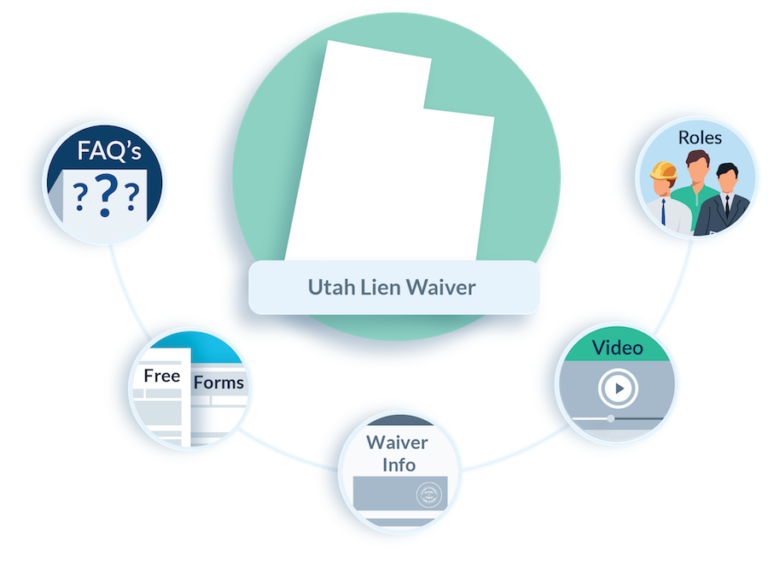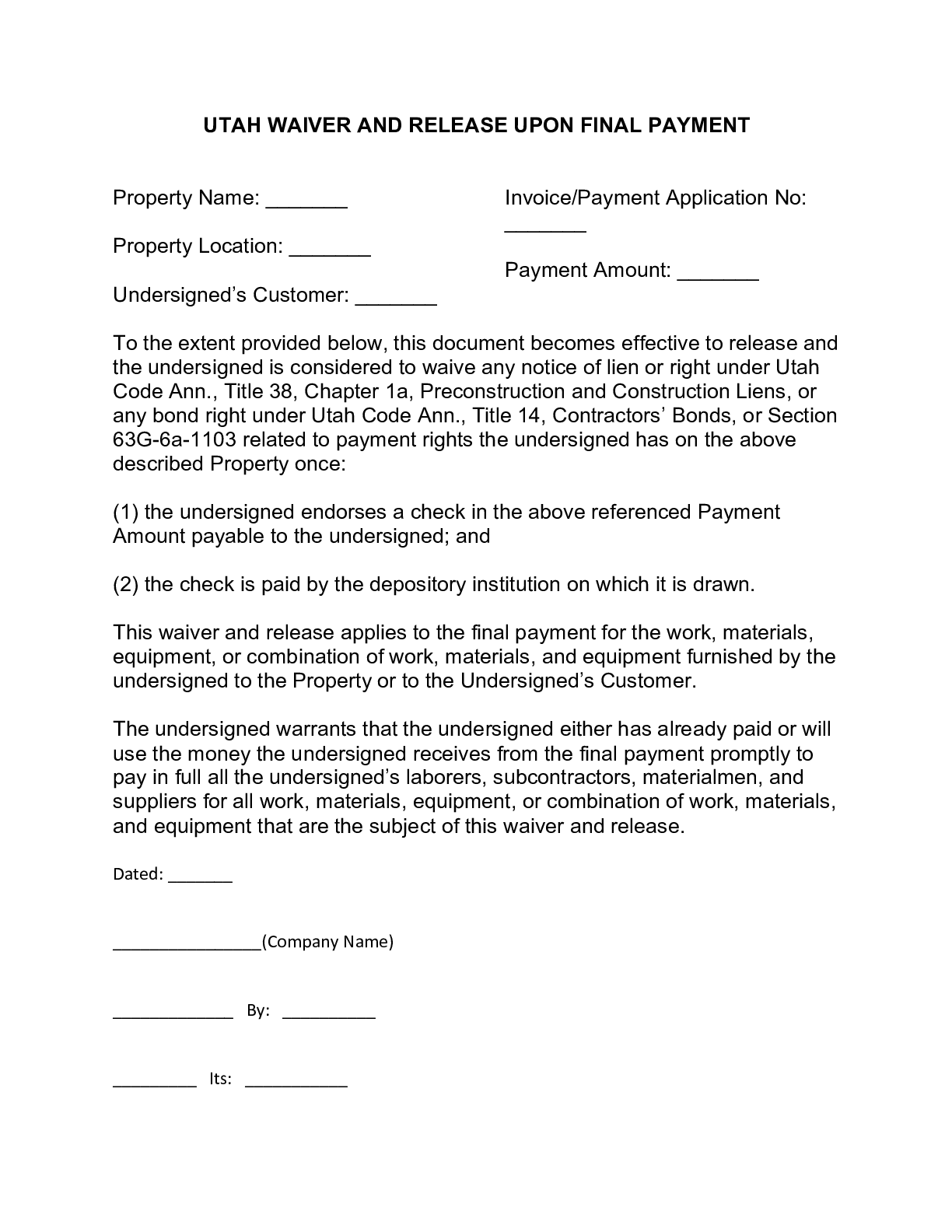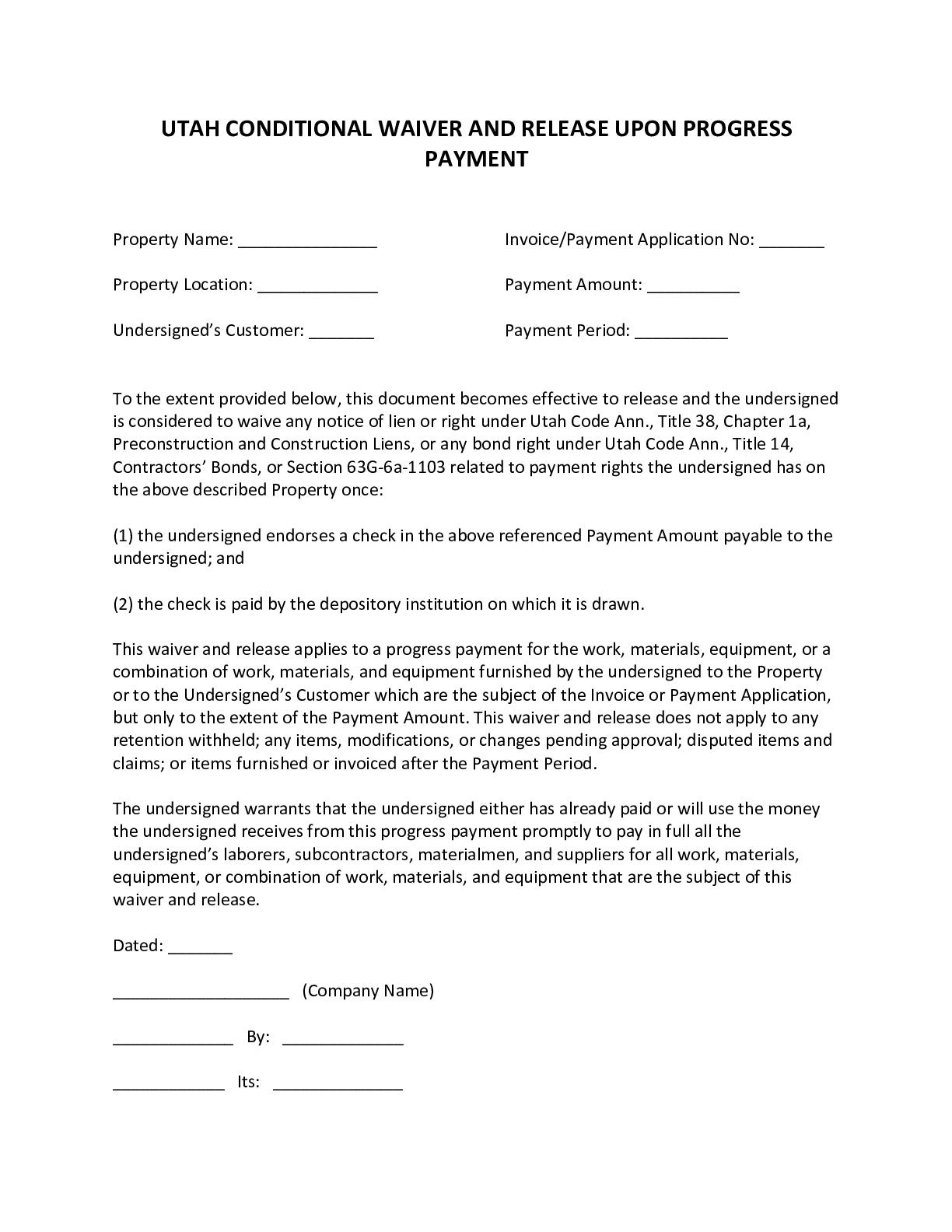Utah Lien Waiver Rules
- Rules At A Glance
- Top Links
Specific form Required
Utah provides specific statutory forms that must be used in order for a lien waiver to be valid.
Notarization Not Required
Utah lien waivers do not need to be notarized in order to be effective.
Cannot Waive Rights in Contract
Utah does not allow future mechanics lien rights to be waived or limited in contract prior to work and payment.
Cannot Waive Rights Before Payment
In Utah the right to a mechanics lien may not be waived or limited unless in consideration of payment.
Utah has an interesting history with lien waivers. In 2007, Utah enacted legislation broadly limiting lien waivers – but, in response to criticisms regarding that law – amended the law in the same year to provide ways in which a lien waiver could be enforceable. The statute was further amended in 2012.
Utah is one of the 12 states with specific lien waiver forms provided by statute, and in order to be valid. The two forms provided by Utah statute are the conditional progress payment lien waiver, and the final payment lien waiver. For guide on how to fill out these forms:
A Utah lien waiver must “substantially” in the form of the template provided. There was some leeway in determining what actually constituted “substantial compliance” with the statutory form in cases where other templates were used, but some clarity was eventually provided by Utah courts. In order for a lien waiver that is not specifically in the statutory form to be effective in Utah, the waiver must include specific elements:
1. A statement that the document is intended by the signing party to be a waiver of lien rights in accordance with Utah law;
2. Specific information related to the job and waived lien rights, including the name and location of the property, the name of the party that hired party waiving rights, and the payment amount subject to the waiver;
3. An explicit notice to the waiving party that, by signing the waiver, s/he will be giving up rights to which s/he is otherwise entitled, and defining the conditions upon which waiver of those rights become effective;
4. A statement that the waiving party has paid all obligations further down the payment chain subject to the waiver, or that the waiving party will make such payments using the funds received in exchange for the waiver.


